You can already picture your future app or website, it has a clean design, smooth functionality, and some aces in the sleeve like cool animations to wow the users. However, the dream hits the wall of reality… Where do you even start? How do you turn that aspiration into something tangible people can actually use? And how on earth do you make sure it doesn’t crash the second someone tries to log in?
Contents:
Well, I’ve been there. I remember sitting at my desk years ago, staring at a blank screen, wondering if coding was secretly an alien language designed to drive people crazy. It kinda is though, at first. Especially when you’re juggling budgets, deadlines, and trying to figure out whether to hire developers or utilize no-code tools is the best option. And let’s not forget all those long debates with stakeholders about which feature to prioritize. Ugh. Still, you don’t have to go through all of that headache alone. Not anymore.
We are lucky because nowadays software development solutions help take the guesswork out of the process and save you from pulling your hair out. And in this article, I’ll dive into practical strategies for such solutions. Finding the right team, avoiding common pitfalls, and keeping your project on track—even when things get messy. By the end, you’ll feel way more confident about moving forward with that idea of yours.
What Are Software Development Solutions?
Definition and Why They Matter
They are the frameworks, processes, and tools that you use in order to build your website or app. I’d compare them to the materials and blueprints that you use in order to build a house. Except instead of a physical house, it’s a virtual house, and instead of bricks, you’ve got lines of code, and maybe some APIs for good measure.
Now, why does this matter? Well, there are canned solutions which, at first, might seem like a fix-it-now solution. You know, pre-built platforms that claim “no coding required” or “launch in minutes.” And they do work, naturally. For a little while. Sooner or later, you reach the speed limit sign. Out of nowhere, something which had felt, at first, like a fast solution now turned into something more akin to duct tape wrapping a leaky pipe. Classics that work in-house, but don’t cut it in app creation.
That’s where custom software development solutions come in. Just as when you hire an architect to design a house just the way you require it, rather than buying a cookie-cutter apartment. A custom one lets you build exactly what you want, in the way you want. A customized one lets you build exactly what you require, the way you require it. Need a specific workflow for your team members? No problem. Need third-party app integration to be as silky as possible? No problem. Want to stand out from everyone else with bespoke functionality? Your pleasure.
I’ve seen too many startups try to cut corners on generic tools, only to discover later that they’re locked in. They either outgrow the tool too quickly or spend so much time hacking it to fit their needs that they might as well have built something from scratch in the first place. Don’t get me wrong, I’m not saying pre-built solutions are useless. They have their place, especially for early-stage MVPs or small projects. But if you’re serious about scaling and differentiating yourself, custom is the way to go.
Also, custom software developer solutions aren’t just about avoiding constraints. They offer control. You can tweak every little thing to suit your brand, improve performance, or improve user experience. That level of flexibility? Worth it. Since you own the codebase, you’re not at the mercy of someone else’s price changes, feature additions, or shut-down notices.
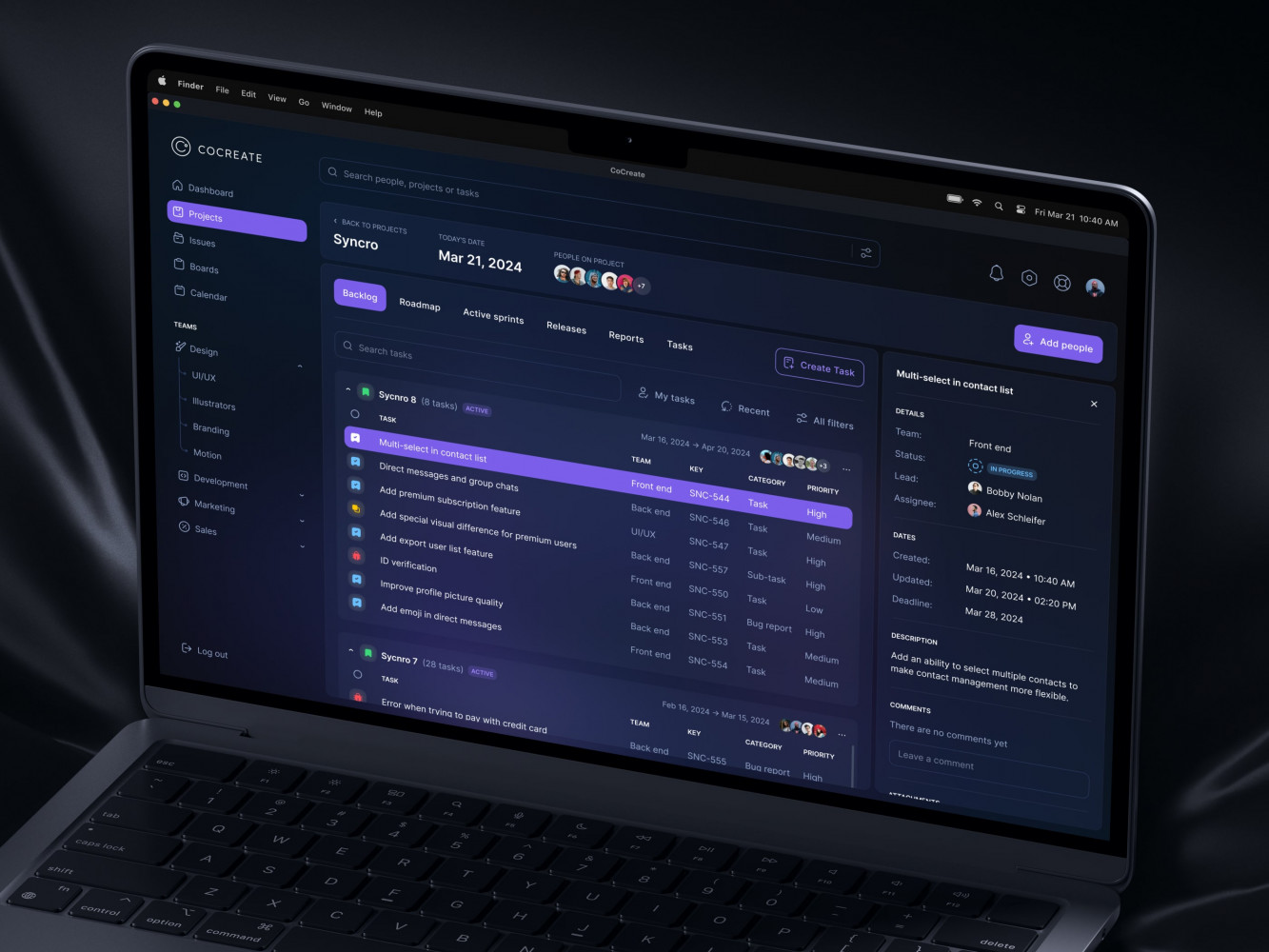
UI Design for a Task Management Tool by Shakuro
Types of Solutions We Offer
Speaking of custom approaches, we also provide a variety of services adapted to your business needs and the demands of your users. With more than 500 projects behind our backs, we have experience in many industries: e-commerce, fintech, healthcare, SaaS, real estate, etc.
Web Development
Your website typically makes the first impression of your business. If it looks old, loads at glacial speeds, or is awkward to navigate, you’re sending potential customers running before they ever have a chance to get acquainted. It’s like showing up to a business lunch in your pajamas—you wouldn’t do that, would you? A quality site, though, says to visitors, “Hey, we’re the real deal, we care about the details, and we’re here to make your life easier.”
Now, building or rebuilding a website isn’t merely about tossing together some good-looking visuals (although good looks are certainly in the mix). For us, it’s about building a user experience that is natural, valuable, and engaging. Want an e-commerce site that turns browsers into buyers? Done. Want a portfolio site that highlights your work in the best possible light? Indeed, we’ve got you. Do you need something completely unique, like a custom dashboard or interactive analytics solution? That’s what we do.
Websites and platforms are a different beast, but in reality, they’re where the magic happens. These aren’t just static web pages—they’re dynamic, working systems that fix real problems. Project management software, booking sites, learning management sites, or whatever else where users must log in, interact, and get things done. Building these requires a little more know-how, maybe, but when done well, they become cornerstones of your audience.
That’s why, when offering custom software development solutions, we focus on learning what you desire first. Are you trying to drive more sales? Drive more engagement? Streamline internal processes? After we know what success will mean to you, we work backward from there. Oh, and by the way, we don’t drop you off with a finished product and wave goodbye. We stick around to support, keep up, and scale as your needs shift. Because let’s face it, your business isn’t going to stay the same forever—and neither should your website or app.
Frontend Development
Human beings do judge a book by its cover, and the same rule applies to websites and applications. The frontend is the storefront of your business. It’s what people see, touch, and directly interact with. And if it’s not polished, intuitive, and an absolute pleasure to interact with? Then you might as well hang a “Closed” sign on the door. You’d like your users to go through your app or website without even realizing it, right? Like you go into a well-designed shop and everything is exactly where it needs to be. That’s the kind of magic we’re attempting to do in frontend development.
Empathy and user-centricity are the bases of our philosophy in frontend development. The real goal is to make your site or app work for your humans. Does it load quickly? Is it easy to use? Can someone fill out a form or click a button without wanting to throw their phone across the room? Those are the things we sweat. We combine UX with high performance, making digital products that are intuitive and engaging. Such web applications do take time to create, but our group came up with a custom approach to speed everything up.
There is a standardized collaboration procedure between web designers, frontend developers, and backend developers. Apart from Agile principles, it includes building custom tools to minimize time-to-market time. Still, the approach saves a precise alignment between the initial concepts and the final result. Here is another bonus for you: custom software development solutions are cost-effective. One, they reduce development time, second—they are cheaper.
Oh, and here’s another curveball—performance matters more than ever. Slow-loading pages are basically kryptonite for user engagement. Studies show that if your site takes longer than three seconds to load, most visitors will bounce faster than you can say “conversion rate.” So yeah, we don’t just focus on how things look; we optimize every pixel, script, and asset to ensure lightning-fast performance. Trust me, your users—and your analytics—will thank you.
Plan to build a content-rich app? No problem, a headless CMS approach like PayloadCMS gives quick deployments without establishing complex back-end systems. You don’t need to stress about hiring a full-time developer or figuring out which framework to use. That’s what we’re here for—to take the complexity off your plate and deliver a frontend that wows your users while supporting your business goals.
Python Development
If you’re looking for a language that’s as versatile as it is powerful, Python is pretty much the Swiss Army knife of programming. Almost 47% of expert developers use Python as their primary language. Rapid development features, scalability, flexibility, and clean syntax—are just a few of the bonuses to name.
So of course, it’s no wonder that we provide Python development services that suit projects of all sizes, small or enterprise, to scale smoothly. To build rich-content apps, the team utilizes versatile frameworks such as FastAPI and Flask. Discussing tech, we also implement cloud services and frontend tools such as React. They allow us to provide highly interactive user experiences and are easily integratable with Python backends.
What if the application is data-intensive? In that case, the team works with Python and numerous databases like PostgreSQL, MongoDB, and neo4j. Data management remains efficient and secure. By the way, Python gets along with other languages and tools too. If you already have systems in place, our software development solutions fit like a glove, boosting operational efficiency.
Sometimes, a product requires a tailored API to bridge various systems or add new features. Building robust, secure RESTful APIs is one of our specialties. They bring various apps and services together, offering robust interoperability with ease of maintenance.
Since Python can handle data, it is an appropriate choice for machine learning and Artificial Intelligence applications. Being able to make timely and informed decisions is one of the software development challenges, AI automation solutions in addition to our vast technical experience allow you to overcome that challenge in no time. We do the heavy lifting, thereby leaving you to do what you excel at: business growth.
Even product owners or technical founders can benefit from its agility. If you have to prototype a new feature quickly, with Python we can get something working in record time, have users test it out, and iterate based on feedback. We don’t have to commit to a full-on development process yet. It’s perfect for playing around and being agile—which, let’s be real, is valuable when you’re trying to find product-market fit.
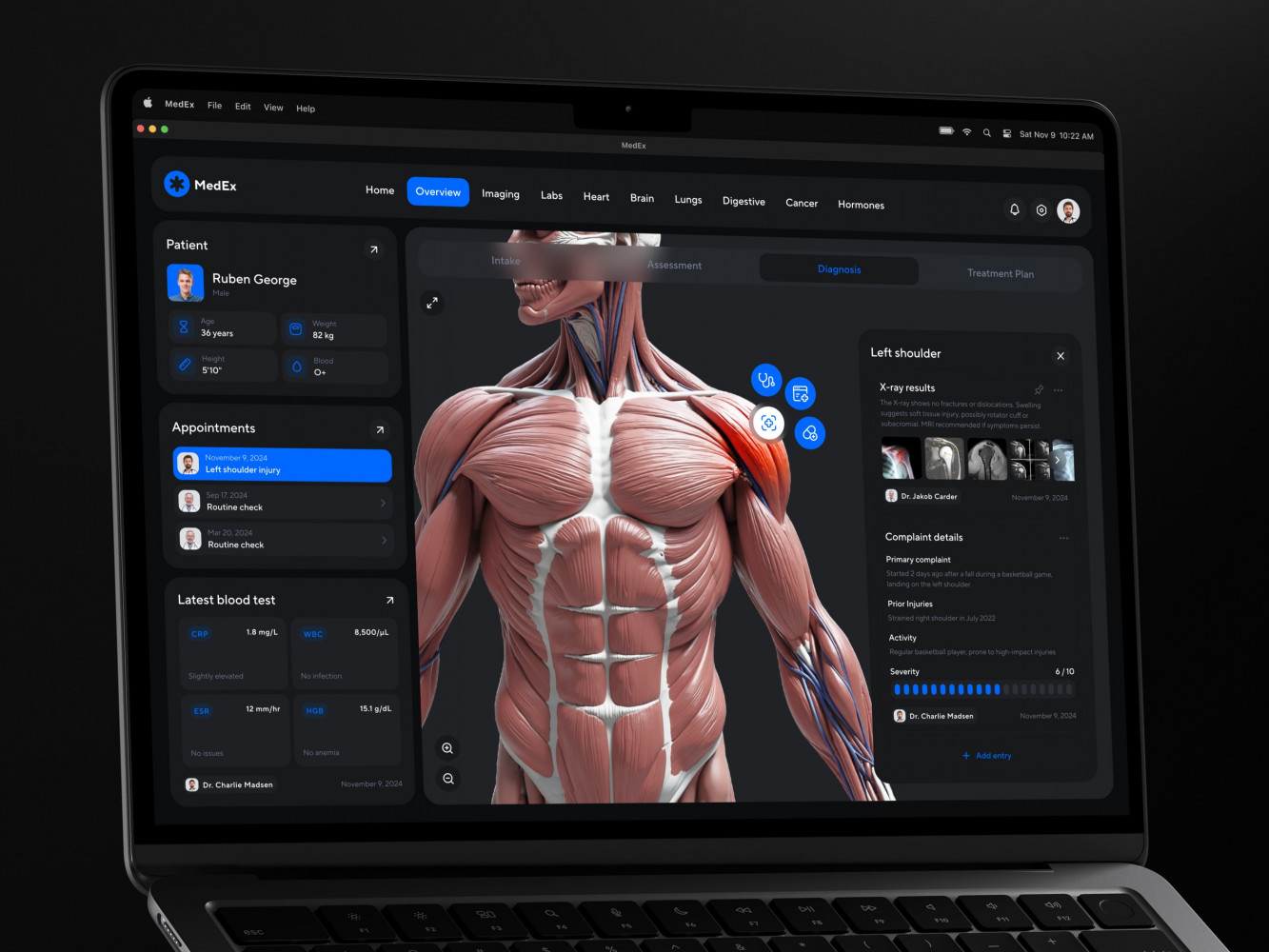
Medical Management Software Dashboard by Shakuro
Native Mobile Development
It means creating apps specifically for one platform using its official tools and languages—Swift or Objective-C for iOS, Kotlin, or Java for Android. Why does this matter? Because each platform has its own quirks, design guidelines, and performance optimizations. You’re tapping into everything the platform offers, from hardware features (like the camera, GPS, or biometrics) to those little UI animations that make an app feel polished and professional.
I can imagine what you’re thinking: “Isn’t native development more expensive or time-consuming?” Of course, it can be—but hear me out. If you’re shooting for an app that simply feels right on a given platform, native is absolutely worth it. Trying to strike two platforms roughly equally well with a single codebase tends to compromise. With software developer solutions, you’re giving each platform the attention it deserves, which translates to happier users and fewer headaches down the road.
Since 2008, we’ve developed native Android and Apple ecosystem apps all the way from iWatch to Vision Pro. The design and technology change with the times, but our goals don’t: develop responsive, intuitive apps that are pretty and actually solve the user’s problem. E-commerce, finance, health, sports, social networks, event planning services, and video tutoring websites—we have full-stack development solutions for almost any industry.
iOS Development
If you’re targeting Apple users (and let’s be honest, who isn’t these days?), you need an app that feels like it was born and raised in the Apple ecosystem.
iOS users are a special breed. They expect apps that are polished, intuitive, and lightning-fast. And honestly? They’re not wrong to expect that. They want an app that matches the quality of their device. That’s why building natively for iOS isn’t just about checking a box; it’s about delivering an experience that feels right.
Apple sets the bar high with its designs and features, giving developers the tools to reach it. We use Swift programming language, Xcode, and of course, Apple guidelines for a seamless App Store launch. Be it cookie-cutter solutions or custom ones, we are up for the task.
A year ago, Apple released its AR/VR glasses, Vision Pro, and it has become a handy tool for building life-like simulations and virtual environments. With next-gen UI overlay and glassmorphism, Vision Pro set a new standard for user interactions: working with apps as if in a sci-fi movie. If you decide to enter the market, integrating the virtual set into your digital strategy can be a wise move. Being iOS developers for 18 years, we specialize in delivering interactive experiences and harnessing Vision Pro’s advanced capabilities when delivering software development solutions.
React Development
If you’re looking to build a modern, dynamic web app or website that feels fast, responsive, and downright magical, React is your golden ticket. It’s not just another JavaScript library—it’s a game-changer. Built by Meta and used by giants like Netflix, Airbnb, and Instagram, React has become the go-to choice for building user interfaces that are both beautiful and performant. Why? Because it’s all about components. Think of them as little Lego bricks that you can snap together to create anything from a single button to an entire app.
Clean, efficient, and scalable. What’s not to love? And we love it. Our dedicated team with a proven track record builds long-lasting, scalable projects ranging from high-performance websites to feature-rich apps. Tech stacks like React + Next.js, Tailwind CSS, TypeScript, and supportive libraries (React Query, React Table, etc.) give code reliability, flexibility, high interactivity, and reliability.
Ruby on Rails Development
RoR has been around for years (since 2004, to be exact), and guess what? It’s still going strong. Why? Because it’s reliable, developer-friendly, and perfect for startups and product owners who need to move fast without sacrificing quality. It’s built on the idea of “convention over configuration,” which basically means you can hit the ground running without getting bogged down in endless setups or decisions. Need a database? Rails sets it up for you. Want user authentication? There’s a gem (that’s Rails-speak for a plugin) ready to go. You save time, energy, and headaches so you can focus on what really matters: your business logic and user experience.
Some people think Rails is only for small projects, but that’s a myth. Sure, it’s great for MVPs and early-stage apps, but it’s also powerful enough to handle enterprise-level traffic. Take Shopify, for instance—millions of merchants rely on it daily, and it’s all powered by Rails. That’s why we also offer custom software development solutions based on RoR. You are a startup that needs an MVP delivered quickly and at a reasonable price? Or you have a middle market business that requires proper scaling? RoR services are the answer in both cases. Oh, and we don’t just throw code together; we design systems that grow with you.
Here’s another reason Rails shines: its ecosystem. The Ruby community is passionate, supportive, and packed with resources. This speeds up development and keeps costs down because we’re not reinventing the wheel every time. And let’s face it—having fewer bugs and security issues to worry about is always a win.
Low-Code Development
If you’ve ever felt like traditional software development takes too long, costs too much, or feels like it’s written in a language only aliens understand, low-code might just be your new best friend. It’s not magic (though it kind of feels like it), but it’s as close as we get to building apps and websites without needing to write endless lines of code.
Low-code platforms like Webflow are designed to make development faster, simpler, and more accessible. Instead of starting from scratch with a blank slate of code, you’re dealing with visual interfaces, drag-and-drop components, and pre-built modules that let you piece together functionality. It’s all about getting things done quickly without quality—or your sanity—taking a hit.
Now, I can address what I imagine might be your response: “Wait, does that mean my app is gonna look generic or run clunkily? ” Not on our watch. While some low-code platforms can churn out cookie-cutter solutions, we don’t do that. Our team knows how to tailor and build upon these platforms to create apps that are one-of-a-kind, refined, and exactly what you require.
The low code is only the beginning of software developer solutions—we build upon it to get you something that’s truly yours. What if your requirements shift halfway through the project (and trust me, they always do)? In traditional development, that could mean rewriting code segments and moving the timeline back. With low-code? Changes are often as simple as adjusting a configuration or dragging a new feature into place. It’s agile, responsive, and perfect for startups or businesses that need to stay nimble.
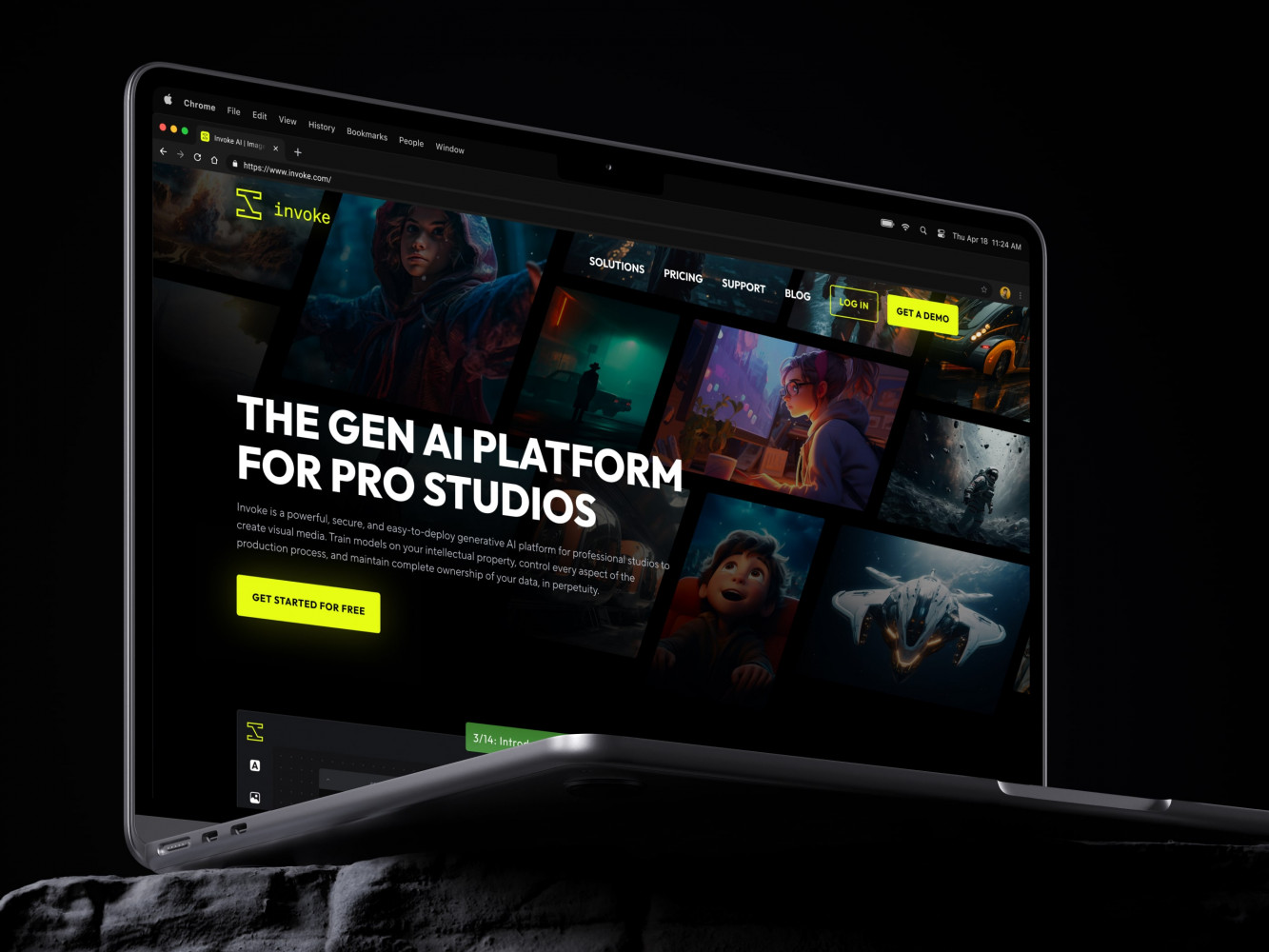
LP Redesign for Creative Production Platform by Shakuro
Why Choose Custom Software Development Solutions?
Advantages to Your Business
Custom solutions are the equivalent of buying a house. Sure, you’ll get along if you’re content with having a roof above your head, but before you know it you find yourself balking at the foibles. The walls are too thin, or the layout is not very you-friendly in your daily habits. You muddle through, but eventually, you’ll find yourself saying, “Wouldn’t it be great if this house were created with me specifically in mind?” That’s precisely what the custom solution accomplishes—it’s developed in accordance with the way that you work.
“Custom is too expensive.” Okay, sure, it may cost more initially than throwing something together quickly with what you already have. But! Those cheaper solutions somehow manage to come back and bite you later. You hit walls, outgrow them, or worse—you end up spending double trying to duct-tape workarounds together. Believe me, I’ve seen it happen.
I’ve watched companies overlook how custom software development solutions grow with them. Off-the-shelf products are great until you hit your head on a wall. Want a feature that doesn’t yet exist? Nope. Want to scale up without shattering the entire thing? Easy to describe, difficult to accomplish. With custom development, however, you’re in charge. You decide what gets built, when, and how. And when you own your codebase, you’re not bound by someone else’s rules around pricing updates or sunset dates. Freedom like that? Well worth its weight in gold. And of course, don’t be forgetful about differentiating yourself from the herd.
Let’s say you have an online store. If you’re operating the same Shopify theme as the next guy, how do you stand out? Custom software lets you get creative, whether it’s with varying customer experiences, smarter automation, or integrations that can’t be beaten by the competition. It’s a chance to show the world—and your end-users—craftsmanship.
One last thought: working with a team like ours means you’re not just getting developers; you’re getting problem solvers. People who geek out over clean code, intuitive UX, and clever design hacks that make your site stand out. People who’ve seen many challenges under the sun—from tricky integrations to last-minute pivots—and figured out how to overcome them.
I’ll sum up the advantages in a list:
- Customized to your needs: Built specifically for your business processes, workflows, and goals. No more forcing square pegs into round holes.
- Flexible and scalable: Expands with your business. Add features, handle more users, or add functionality without needing to begin again.
- Control and ownership: You own the codebase, so you’re not beholden to another company’s platform, cost, and regulations.
- Competitive edge: Stand out with unique features, integrations, or experiences that no out-of-the-box tool can give.
- Enhanced integration: Integrates natively with your existing systems (CRMs, ERPs, APIs) without requiring workarounds.
- Overall cost savings over the long term: Upfront costs may be higher, but you save on the hidden costs of tweaking, patching, or replacing pieces along the way.
- Genuinely strong security: Custom-fit software developer solutions can include specialty security measures that protect sensitive information, as opposed to generic packages that simply provide bolt-on generic procedures.
- Freedom from vendor captivity: You don’t owe allegiance to third-party vendors who have the ability to change prices, drop services, or limit access.
Real-Life Examples
To illustrate what I said above, let me tell you about a few real-life cases where we provided software development solutions.
Starting with one of the most complicated custom dev cases we’ve worked on. Symbolik is a financial tool for analytics created by legendary Tom DeMark for professional traders and investors. We’ve got a noble quest: redesign the ecosystem and develop a social network for the platform so that people can exchange ideas and learn. Also, one of the key requirements is scalability, as Symbolik wants to add new features like multimedia integration.
All members should have a voice no matter if they are famous influencers or regular financial enthusiasts. This is the philosophy of Symbolik, and we level out the field for the members. When working on the social feed design, we’ve noticed that most posts in social networks use emojis to bait readers. So Symbolik has a different approach with the “stock” options to pick from. As a result, the users can scan through the posts to grasp the most significant parts.
The product needs a mobile version, and it definitely brings a challenge or two. For example, we have to adapt a charting tool. It’s a bit too complex for a mobile format, so there have been a few brainstorming sessions to solve the case. We come up with several solutions, including a tab bar that you don’t see often in a mobile browser.
For a robust and modular architecture, we hand-pick a comprehensive tech stack. Next.js, React, and TypeScript for frontend, C#, ASP.NET Core 6, and MySQL for backend. To handle instant updates of various discussions, the team opts for WebSockets and RabbitMQ. There are several third-party services we integrated into Symbolik. For instance, MagicBell for real-time notifications, advanced charting tools, and more.
As you can see, custom software developer solutions find a way around almost any challenge, and that’s what they are for. Symbolik stands out among competitors and offers one of the most comprehensive toolkits for financial analytics.

Symbolik case by Shakuro
Now here’s another case—a virtual classroom platform for CGMA, an art education provider. Their ready-made solution has lots of limitations preventing them from scaling and adding new features. So the goal of our collaboration is to transform the outdated product into a cutting-edge e-learning hub for aspiring artists and teachers. This leads to building three different portals: for students, for instructors, and for admins.
Sounds kinda complicated? Yeah, so we break down the project into several phases. This structural approach helps deliver features on time, as CGMA depends on the educational curriculum. Hardly anyone wants to study in a half-renovated room, right?
First and foremost, we revamp the navigation system to make it more straightforward, simple, and predictable. Thus, students won’t wander around in search of necessary lesson parts. And educational platforms are data heavy, one can easily get confused. Together with a design system and extensive documentation, it makes a solid, consistent foundation.
Second, during the development, we migrated the old Drupal-based platform to new RoR structure. Again, this is a challenge, because the structures are completely different, there are lots of data, and the clock is ticking. But, our devs managed to transfer all the data safely.
Next, CGMA wants its new platform to have additional features like live chat, Discord & Zoom integration, multimedia support, etc. Apart from the third-party services integration, we also create a custom chat UI and leveraged Discord’s storage capacity. There is also a PayPal integration for a convenient payment system.
Now, with lots of lessons, one needs a responsive means to manage them. We take care of this for admins, and they can load and store videos from Zoom, YouTube, and Vimeo. The videos are automatically optimized for different screen sizes and devices.
See how custom software development solutions nailed the special client’s requirements? Cookie-cutter options would likely fail to provide so many options for three target audiences: students, admins, and instructors. Keep in mind that the platform will keep scaling in the future. So yeah, custom is the only way applicable here.
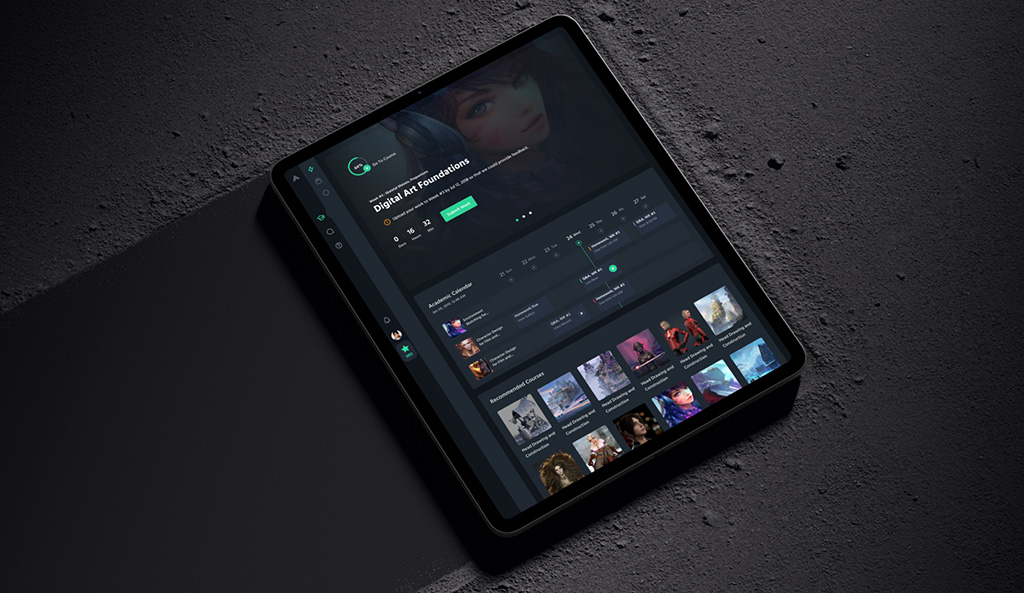
CGMA platform by Shakuro
How We Work: From Idea to Launch
I’ve highlighted a couple of cases, now let’s dwell on how we organize the workflow to achieve that level of quality.
Step 1: Consultation and Planning
You are the only one who has the exact vision of how your product should look and work. You just need the means to bring it to life. So the first step is deep research and road mapping. I can compare it with getting ready for a journey: packing, checking the route, finding places you want to visit, etc. Same here. Together, we discover the target audience, its preferences, a suitable niche, the right approach, technical requirements, and potential pitfalls.
This way, we sketch out the product and tweak something if necessary before actually diving into development. Also, forewarned is forearmed. Research is essential to finding bottlenecks and creating a workaround when the team actually faces that problem.
For example, when we collaborated with Solio, a Korean stock trading app, our team researched the local market and target audience (young people who had little financial experience), then adapted the fintech tools to their needs. Including a robo advisor, which aims to help aspiring investors until they are feathered to fly on their own.
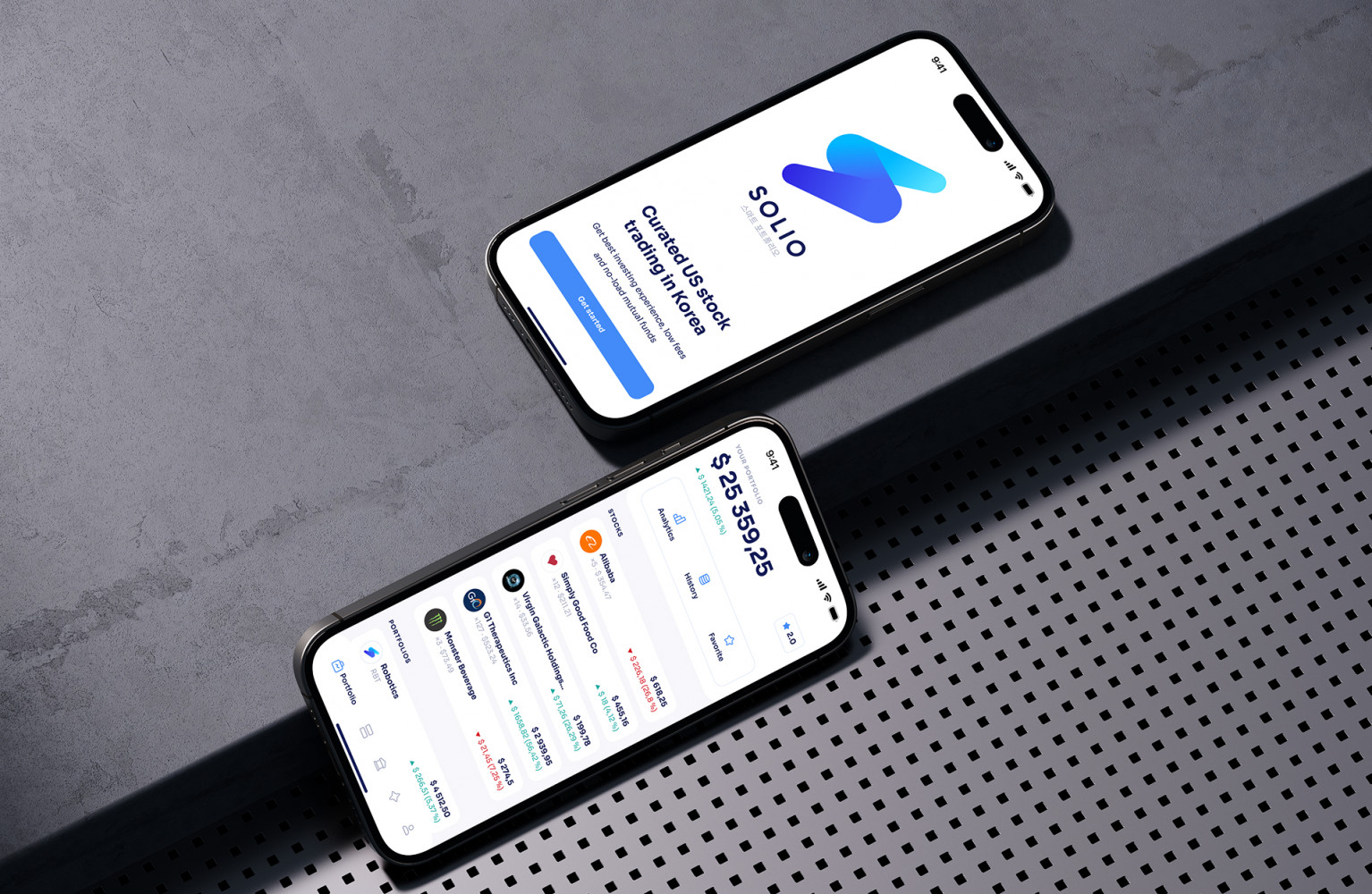
Step 2: Design and Development
Once everything is ready, the workflow switches to low-fidelity prototypes, where all ideas start to get shaped. This is not just beauty and fine colors—the cornerstone of our philosophy is user-centered design. We focus on convenient user interactions, with minimal time to reach goals. Also, accessibility and ease of use are essential, because many people from your target audience can have health problems. I bet you probably battled with tiny buttons in the very corner of the frame that are impossible to tap or even notice. I did, and needless to say, I have never opened that app again. Still, getting back to the beauty: we follow and implement the latest UI/UX design trends to appeal to your audience.
Since we follow the user-centered design principles, usability tests start at the prototype stage. Too early? Not really. What if your app is a huge closet you’ve just assembled but then…noticed a forgotten piece? What a waste of time to place it back. Same here: when the app is ready to launch, it’ll be near to impossible to tweak something (without spawning more bugs as well). So the earlier you start testing, the fewer expenses and problems you will have later.
When the high-fidelity prototype works as intended, the coding phase starts. Here, together with UX, the focus encompasses high app performance. Software developer solutions, React, Python, reusable templates, and industry-standard practices are the means to achieve those goals. Moreover, they speed up the development process and cut expenses. During the development phase, we make several iterations to polish the product. That includes rigorous testing, with users as well.
Step 3: Launch and Maintain
There are certain guidelines for releasing apps and websites, especially if you submit the app to the app stores. We carefully prepare your product for launch following all the rules. But! That’s not the final step. After the release, our team continues to support and scale the product: fixes, updates, security patches, optimizations, database checks, etc. This is where you gradually improve UX with interations and future roadmap planning.
Why Shakuro is the Right Partner for Your Project
Just like in any field, experience in custom software development solutions is critical. The developers have more than 18 years of experience, with 500+ completed projects behind their backs in various industries: e-commerce, fintech, real estate, Web 3.0, e-learning, healthcare, etc. Our custom approach and tools are proven with time and clients’ testimonials on Clutch. The high level of expertise is backed up by a wide range of services we offer. Web, mobile app development, AI-driven solutions, UI/UX design, and branding.
During our collaboration, you become our trusted business partner, and we’re invested in your venture success. Your needs and your vision are important to us, and our team put great efforts into bringing them to life. At the same time, we provide feedback on every iteration and apply tweaks if necessary. So the development process is crystal clear to you and other stakeholders from start to finish. We support you along the way and continue doing that even after the release.
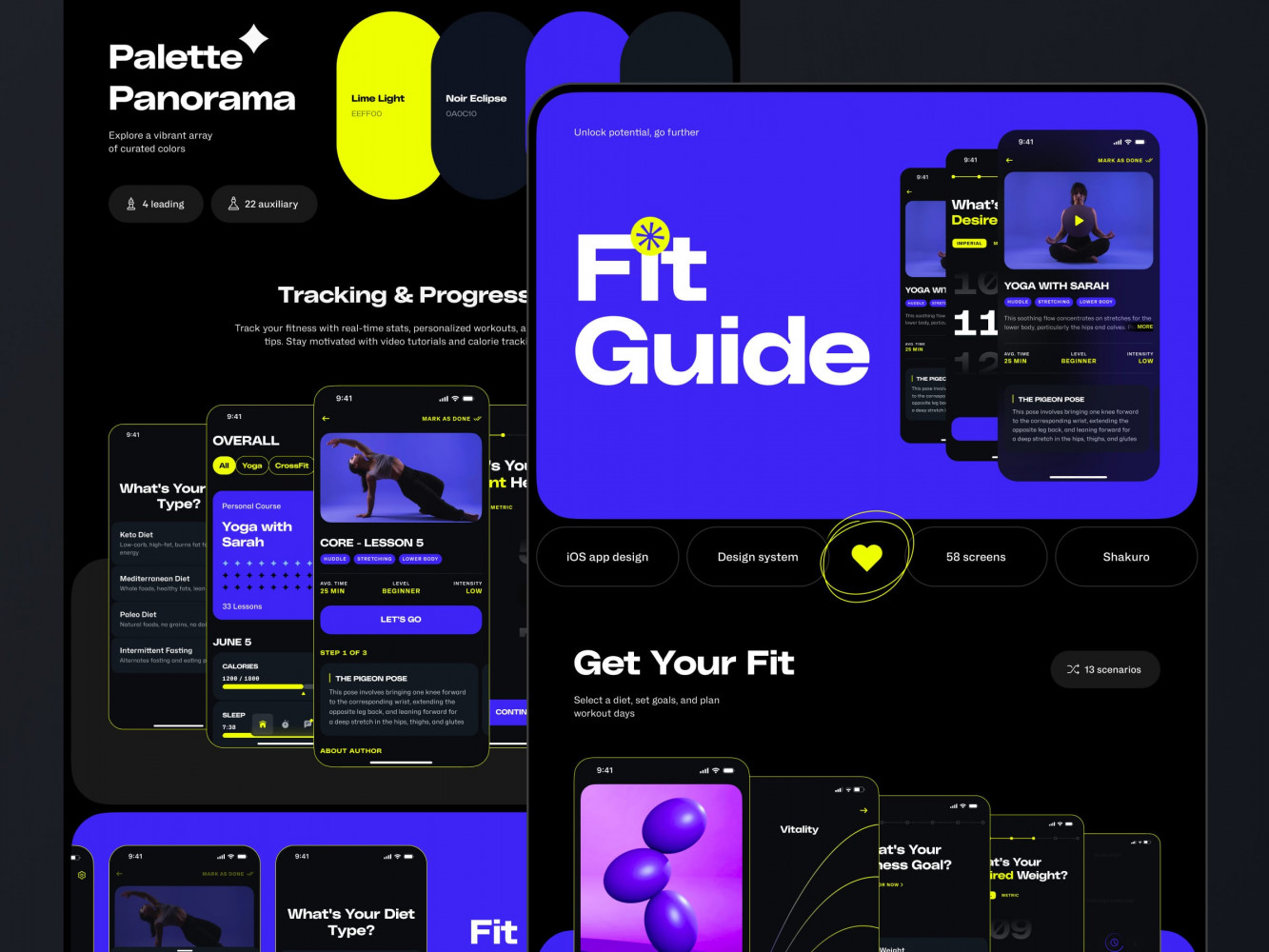
Website Design for a Yoga & Wellness Platform by Shakuro
How to Get Started
Sounds awesome? Well then, here are the steps you can follow to partner with us for your next project:
Step 1: Contact us to discuss your project idea
As I said before, planning is everything because this is basically the map of the whole “journey”. So reach out to us by filling out a form and describing your idea in detail. What you want, requirements, approximate budget, and so on. Give us something to start with. The more details you give, the more precise our proposal will be.
Step 2: Receive a detailed proposal and timeline
Our team considers your submission and prepares a detailed proposal on the project scope, tech stack, and team size. It also includes approximate timeframes for different stages, so you will have an understanding of how long the process might take. Everything can be tweaked and rebalanced to fit your needs, for example, there is a strict deadline and it’s better to opt for an MVP to get everything done on time.
Step 3: Start building your dream website or app with our experts
You got the quote and everything’s fine? Then, we schedule a kick-off call, discuss the project once again, and start the ball rolling. The team sets the iteration timeline, so you get consistent feedback and can tweak the workflow till the later stages.
Conclusion
In the end, software development solutions are not about typing code—they’re about solving problems, opening doors, and building tools that help your business thrive. And while off-the-shelf tools and templates might seem like a shortcut, they usually come with limitations that can leave you stuck just as you’re ready to take the next step.
This is where the custom solution really pays off. It’s not about something being one-of-a-kind per se—though that happens too—it’s about having something that works for you. Something that adapts to you, picks up on the changes that your needs require and enables you to the fullest extent the control of your online presence. No added-in extras, no hacks, no hostage-taking-by-other-people’s-vision. Just a solution that has been crafted around your goals, your people, and your customers.
And we at Shakuro are passionate about creating custom software development solutions to suit your business needs and solve your users’ problems. With an estimated 18 years’ worth of our experience in numerous various industries, we can get virtually any web and app development (and design, naturally) job just right.
Ready to take the next step? Let’s talk. Together, we’ll figure out how to turn your vision into reality, one line of code at a time. Because when it comes to building software, the best solutions are the ones that feel like they were made just for you—because they were.

